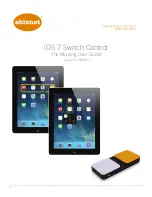
CHAPTER 4 IMAGE FORMATION SYSTEM
COPYRIGHT © 1999 CANON INC. CANON NP6512/6612/7120/7130/7130F REV.0 AUG. 1999 PRINTED IN JAPAN (IMPRIME AU JAPON)
4-11
STBY
INTR
SCFW
SCFW
SCRV
LSTR STBY
Main motor (M1)
Reference bias (ATVC)
Transfer bias
SCRV
0.7sec (approx.)
0.8sec (approx.)
Copy Start key
ON
1.2sec (approx.)
Cleaning bias
1.6sec(approx.)
Figure 4-106
d.
Switching the Polarity of the Transfer Bias (cleaning bias)
The machine uses a direct charging method, allowing toner to move from the photosensitive
drum to the transfer roller as when a jam occurs if left unattended.
To remove excess toner, a positive voltage is applied to the transfer roller as follows, thereby
returning the toner from the roller to the drum:
<Timing>
• While initial rotation is executed after the Copy Start key is pressed
• Part of the period in which the scanner is moved in reverse
• Part of the period in which last rotation is executed
The polarity of the transfer bias is switched by the transfer bias ON signal (serial signal) gener-
ated by the DC controller PCB.
In response to the signal, the microprocessor (Q900) on the composite power supply PCB
causes the transfer positive DC bias On signal (T_REV_ON*) to go ‘0’, so that the positive compo-
nent of the transfer bias (constant current control, +1.56µA / 2.5kVmax.) will be applied to the
transfer roller. (See Table 4-103.)
c.
Correcting the Transfer Bias Voltage Level (ATVC control)
The machine automatically corrects the application voltage level of the transfer bias to correct
the changes in the transfer efficiency caused by the deterioration of the transfer roller or the
changes in the environment.
A current of a specific level (-14.6 µA) is applied to the transfer charging roller during initial
rotation executed each time the Copy Start key is pressed. The microprocessor (Q900) on the
composite power supply PCB checks the transfer current detection signal (T_FW_S), and varies
the transfer bias applied to the transfer charging roller so that it will be an appropriate level.
Reference:
While the transfer charging roller makes a single rotation, the microprocessor (Q900) checks
the transfer current detection signal four times, and determines the level of the transfer bias to
apply using the average of the readings.
Summary of Contents for NP6412
Page 6: ......
Page 12: ......
Page 34: ......
Page 46: ......
Page 48: ......
Page 92: ......
Page 144: ......
Page 176: ......
Page 178: ......
Page 192: ......
Page 194: ......
Page 220: ......
Page 222: ......
Page 256: ......
Page 258: ......
Page 282: ......
Page 284: ......
Page 286: ......
Page 384: ......
Page 388: ......
Page 414: ......
Page 424: ......
Page 430: ......
Page 432: ......
Page 434: ......
Page 484: ......
Page 492: ......
Page 502: ......
Page 506: ......
Page 516: ......
Page 599: ...PRINTED IN JAPAN IMPRIME AU JAPON ...
















































